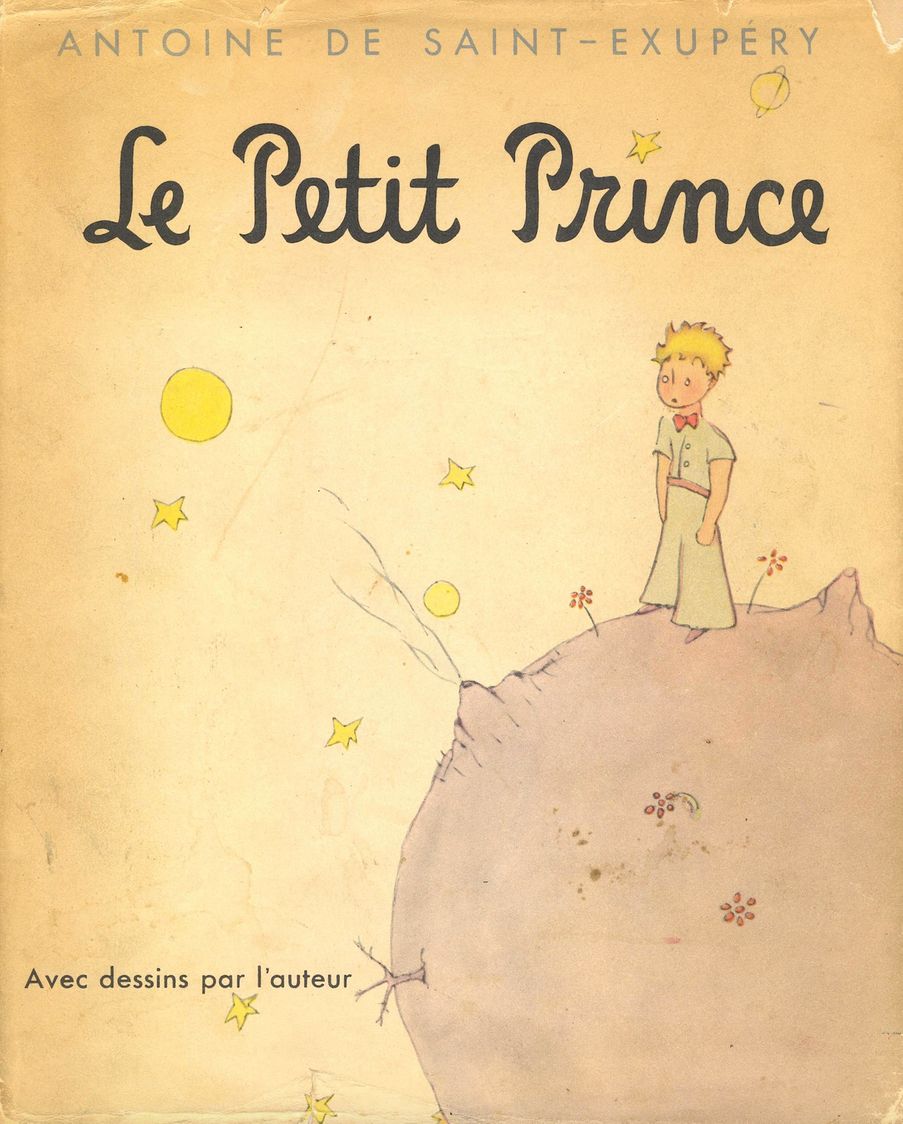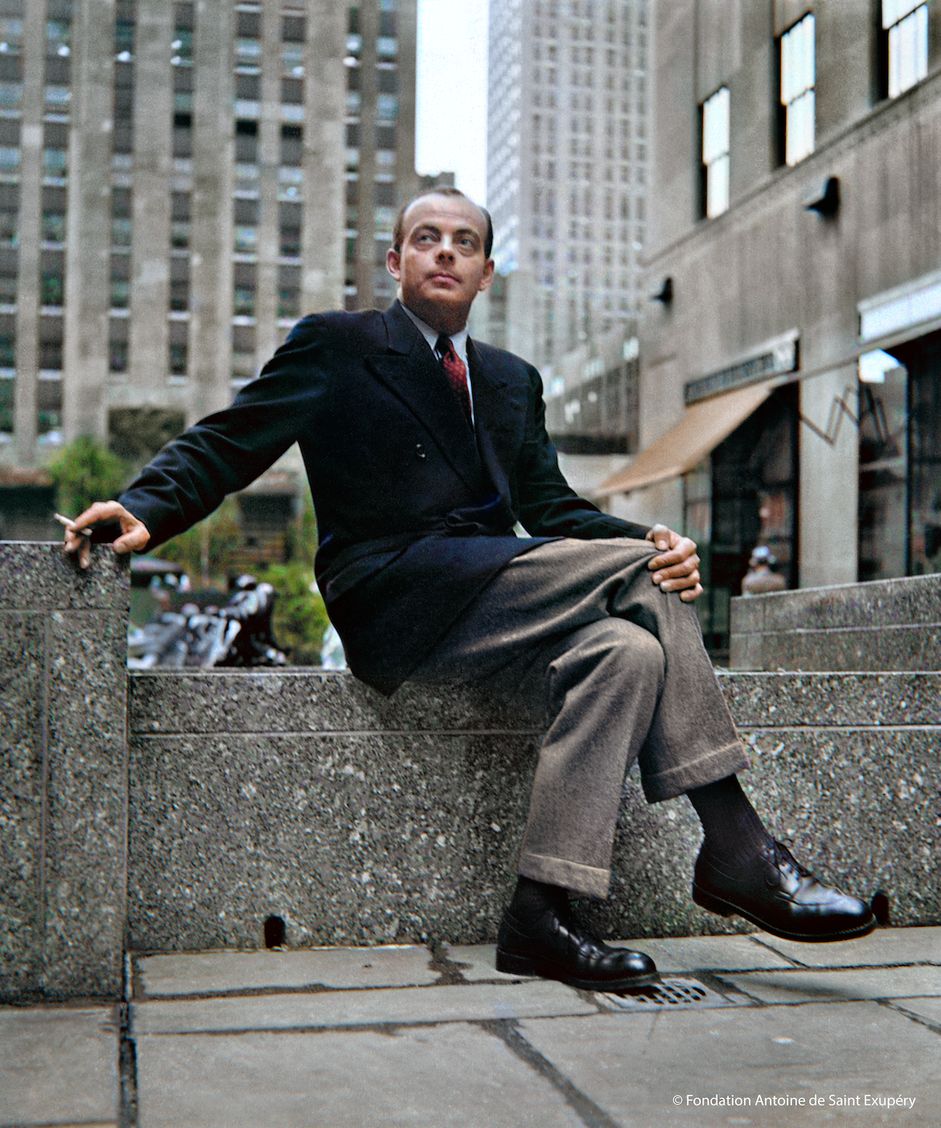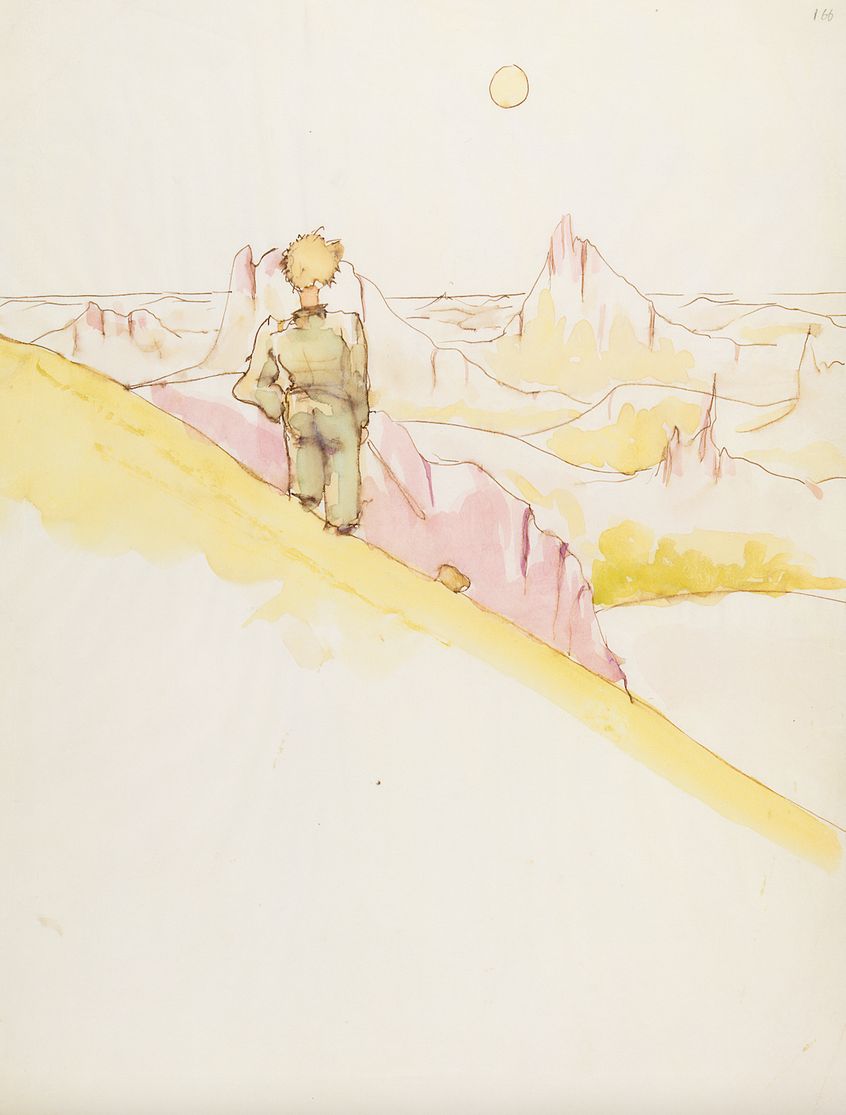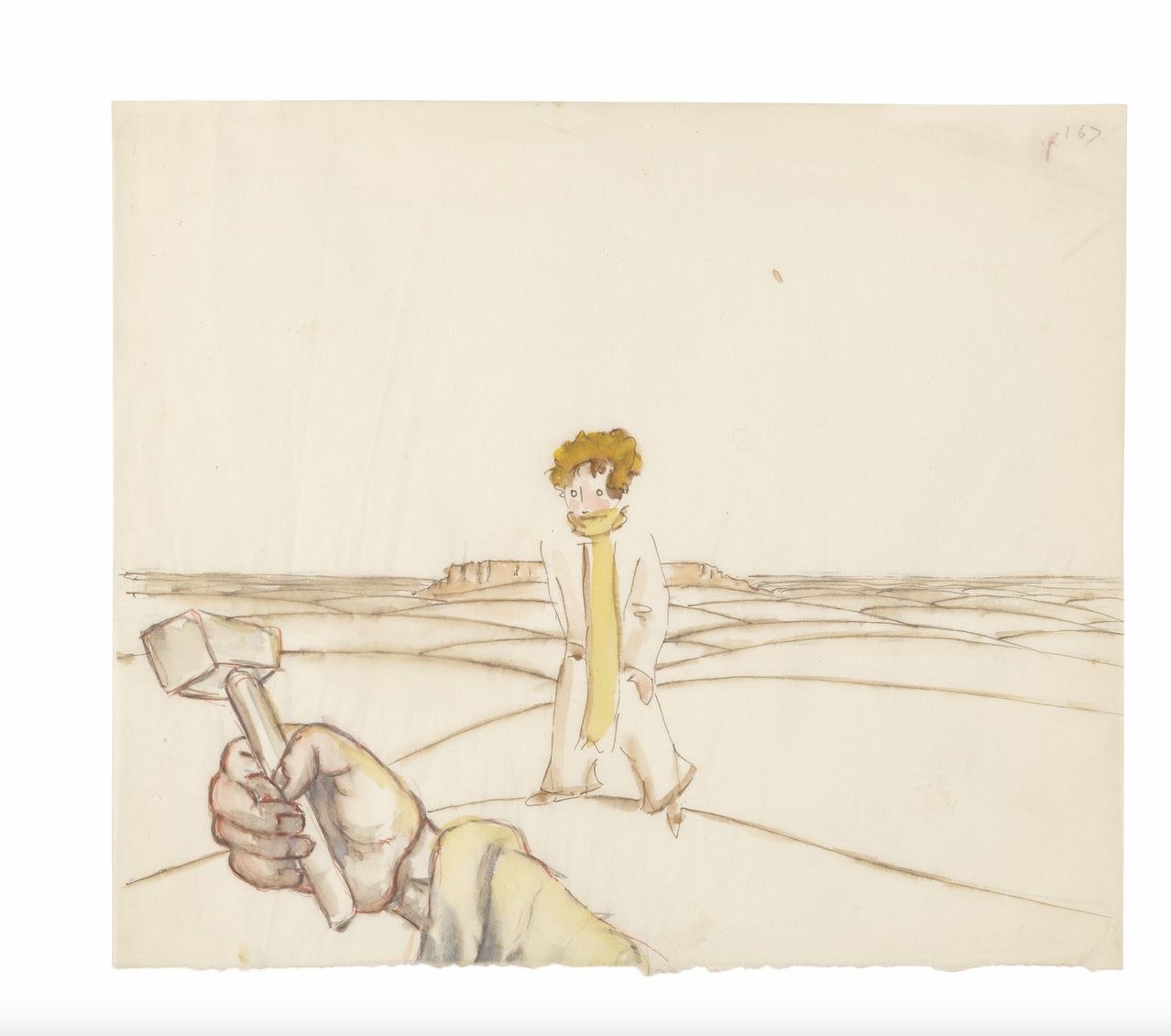The Little Prince has played a central role in the oeuvre of Antoine de Saint-Exupéry. This beloved novella of planetary significance containing undeniable truths about life, adults, and human nature has been a best-seller for close to 80 years, purchased by more than 200 million fans across the globe. The most translated work of literature in the world, available in nearly 500 languages and dialects, it’s a tale of a young prince who visits seven planets, meant to be launched as a children’s book in time for Christmas, but which was in fact addressed to adults (who remain children at heart).

“Its success is due as much to the watercolors painted by the author himself as the text,” explains Olivier d’Agay, Saint-Exupéry’s great-nephew. “Saint-Exupéry doesn’t present it as his testament, but it contains the quintessence of his experiences on earth and his philosophy. In terms of writing style, perfection has been achieved and quotes from the book have circled the globe.” Who can forget passages like, “It is only with the heart that one can see rightly; what is essential is invisible to the eye” or “You become responsible, forever, for what you have tamed”?
First published in 1943 in New York where Saint-Exupéry was exiled and only in France posthumously three years later – following WWII during which he had flown reconnaissance missions on a P-38 Lightning plane for the Mediterranean Allied Air Force under American command – The Little Prince was his final work, released during his lifetime, which enshrined an all-inclusive message that transcended borders, cultures, religions, and time. “A lot of French people don’t know that The Little Prince was written in the United States, during the war, whereas it is crucial to know that to fully understand the book,” divulges Anne Monier Vanryb, curator in the modern and contemporary department at the Museum of Decorative Arts in Paris. Now, for the first time ever in its history, the original manuscript and watercolors of The Little Prince have left New York (on loan from The Morgan Library & Museum) and are being displayed at the Museum of Decorative Arts until 26 June 2022 in the first major museum show in France dedicated to the literary masterpiece.
 Antoine de Saint-Exupéry at the Rockefeller Center in New York in 1939
Antoine de Saint-Exupéry at the Rockefeller Center in New York in 1939
The exhibition An Encounter with the Little Prince was created in partnership with the Antoine de Saint-Exupéry Youth Foundation, whose delegate general, Nicolas Delsalle, says, “Saint-Exupéry’s intellectual and cultural heritage is a tremendous gift to mankind, and it’s the responsibility of his foundation to share this unique heritage with children worldwide by sponsoring educational programs and organizing international exhibitions. Thanks to its phenomenal success, The Little Prince is a global ambassador of the world of tomorrow, enabling its author’s universal values and pioneering spirit to live on through our foundation’s philanthropic activities.”
The show brings together over 600 objects including manuscripts, sketches, poems, notebooks, photographs, newspaper clippings, and correspondence, which reveal the multi-hyphenate Saint-Exupéry, who was at once a writer, illustrator, poet, philosopher, aviator, explorer, journalist, and inventor. Drawing came naturally to him, and he would repeatedly sketch a sad little boy with blond curls and a long scarf everywhere, on his letters and manuscripts, which would eventually evolve into the figure of the Little Prince. “His mother was a very good painter and taught him how to draw,” Monier Vanryb points out. “Drawing is for him a second language, as important as the written one, but also one that can link him to his childhood.”
 "The Little Prince is a global ambassador of the world of tomorrow, enabling its author’s universal values and pioneering spirit to live on through our foundation’s philanthropic activities."
"The Little Prince is a global ambassador of the world of tomorrow, enabling its author’s universal values and pioneering spirit to live on through our foundation’s philanthropic activities."
Exhibition highlights include Saint-Exupéry’s drawings of scenes and characters that didn’t make it to the final cut, giving viewers insight into what The Little Prince could have been. “The examination of the pages of the original manuscript in The Morgan Library is fascinating,” notes d’Agay. “We discover new planets that were not included in the book! We will be able to share and commune with the French public around this unique work, discover the genesis of the work and recall the life of Saint-Exupéry, committed to the service of humanistic and positive values. He was a simple man, a hero and a visionary at the same time.”
The exhibition also traces important moments in Saint-Exupéry’s life, who was born in 1900 in Lyon when aviation was in its nascency. A pioneer of international postal flight with Aéropostale, risking his life to transport mail from France to Africa and South America, he quickly became an award-winning author, recounting his real-life adventures through his writings. His first novel, Southern Mail (1929), was an immediate success, his second, Night Flight (1931), took home the Prix Femina French literary prize, and his memoir, Wind, Sand and Stars (1939), dealing with themes of friendship, death, heroism, and solidarity, won the US National Book Award and the Grand Prix for Novels of the Académie Française.

Teaming up with Alban Cerisier of Gallimard, Saint-Exupéry’s historical French publisher, Monier Vanryb arranged the exhibition in chronological order and dropped audiences clues of how the life experiences of this man of action nurtured his thinking that in turn nourished his writing. For example, Saint-Exupéry’s airplane crash in the Libyan desert in 1935 with his mechanic, André Prévot, while attempting to break the air speed record from Paris to Saigon, served as the opening scene of The Little Prince, where the pilot-narrator is stranded in the desert beside his damaged aircraft. “His recollections of this accident are full of foxes that he saw while wandering in the desert after the crash, and that could be the starting point for the fox in The Little Prince,” states Monier Vanryb. Furthermore, the rose represents Saint-Exupéry’s wife, Consuelo, and he dedicated The Little Prince to his close friend, Léon Werth, a French Jewish writer who fervently opposed colonialism and Nazism.
“The Little Prince is the book that you pass on to your children, grandchildren, friends, and loved ones,” concludes d’Agay. “It is first and foremost a book that consoles the loss of a loved one – there are millions of testimonials in this sense. It is also a guide and a survival manual in this absurd world, in the Camusian sense of the term, for those who doubt or wonder about the meaning of life, death, and relationships between individuals. It is an esoteric book that carries real answers to these questions if one knows how to read between the lines.”








 Antoine de Saint-Exupéry at the Rockefeller Center in New York in 1939
Antoine de Saint-Exupéry at the Rockefeller Center in New York in 1939
 "The Little Prince is a global ambassador of the world of tomorrow, enabling its author’s universal values and pioneering spirit to live on through our foundation’s philanthropic activities."
"The Little Prince is a global ambassador of the world of tomorrow, enabling its author’s universal values and pioneering spirit to live on through our foundation’s philanthropic activities."





-NAC Facade L2.jpg&w=500&h=550&crop-to-fit)
 Back
Back
